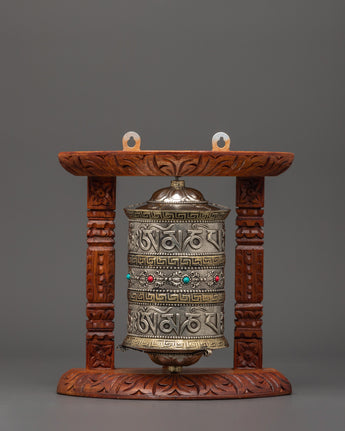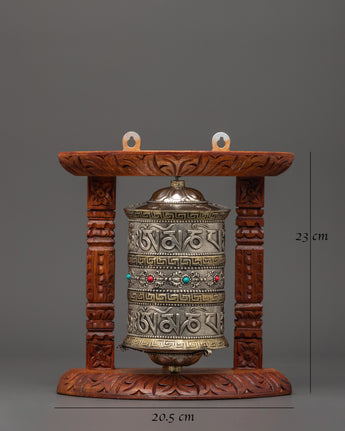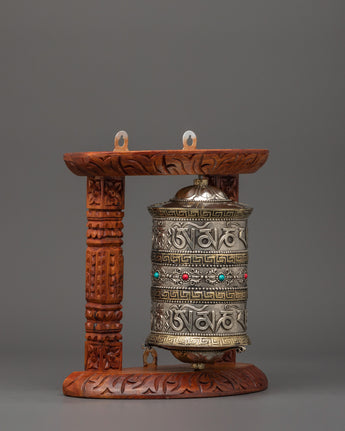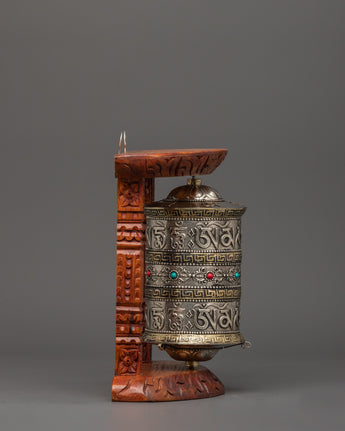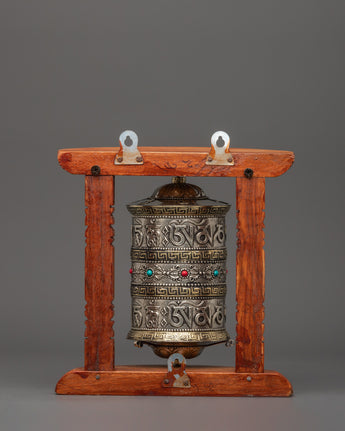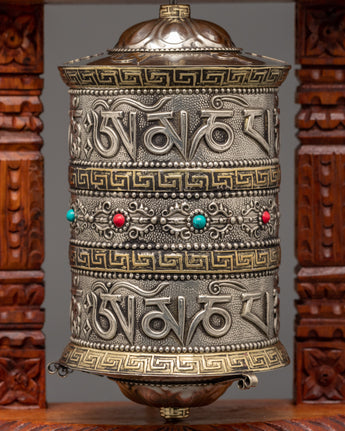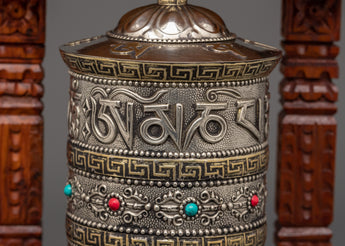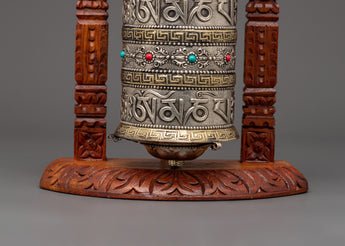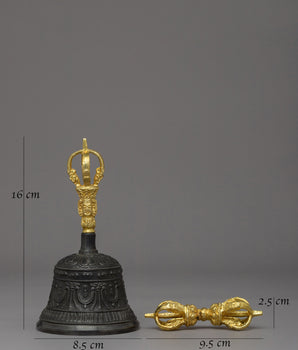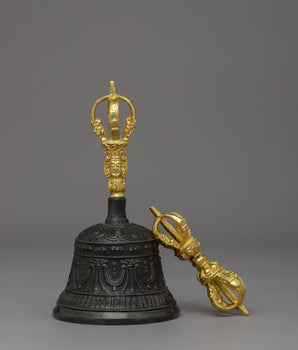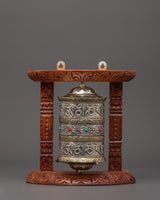
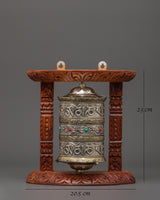
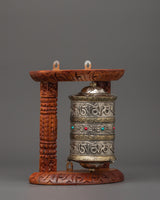
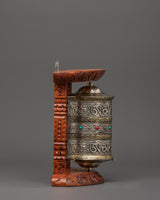
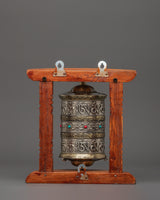
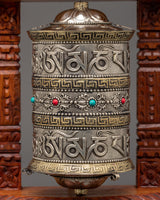
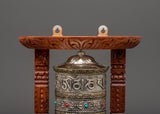
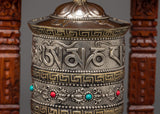
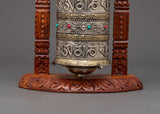
Hand-Carved Tibetan Wooden Prayer Wheel | Sacred Buddhist Spinner
Hand-Carved Tibetan Wooden Prayer Wheel | Spiritual Healing Energy Gift
--------------------------------------------------------
Size: 23cm (Height) x 20.5cm (Width)
Weight: 0.71kg
Materials: Copper body, Brass, Wood, White metal
--------------------------------------------------------
About our Prayer Wheel
This Hand-Carved Tibetan wooden prayer wheel (23cm tall, 20.5cm wide) is a lovely and sacred addition to any spiritual space. Crafted with care, this Buddhist spinner is designed to support your meditation practice by bringing mindfulness and serenity into your home. The elaborate design, crafted from quality copper, brass, and white metal, exemplifies traditional craftsmanship. The prayer wheel's wooden frame adds a warm, rustic atmosphere that is ideal for Himalayan altar decor or spiritual healing.
This Tibetan prayer wheel is both functional and visually appealing. The mantras inscribed on the wheel produce positive energy, which enhances your meditation or prayer routines. This prayer wheel is perfect as a thoughtful spiritual gift or a meaningful centerpiece for your home, adding a touch of ancient Himalayan heritage to your space.
Introduction to Prayer Wheel
A prayer wheel is a cylindrical device on a spindle, used in Tibetan Buddhism. It is typically inscribed with the mantra "Om Mani Padme Hum" and rotated by hand as a form of spiritual practice and to accumulate merit. Spinning the wheel is believed to have the same spiritual benefits as reciting the mantra verbally. The use of prayer wheels is widespread in Tibetan Buddhism and has spread to other cultures.
How does the Buddhist Prayer Wheel benefit us?
The benefits associated with rotating the wheel are numerous. It promotes knowledge, compassion, and bodhicitta in the practitioner, and enhances siddhis, or spiritual powers, such as clairvoyance and precognition. The practitioner can repeat the mantra as often as possible while the wheel is rolling, maintaining a calm, meditative attitude. A Tibetan Buddhist tradition holds that after a practice session, one should dedicate any acquired merits to the benefit of all sentient beings. Then three times Om Ah Hum. This is usually among Tibetans after finishing any Buddhist practice, including the prayer wheel exercise.
How do you set up your own Buddhist Shrine?
• Find a clean, quiet, and uncluttered spot
• Set up an altar table and cover it with an altar cloth that calls to you
• Place your sacred item at the center

